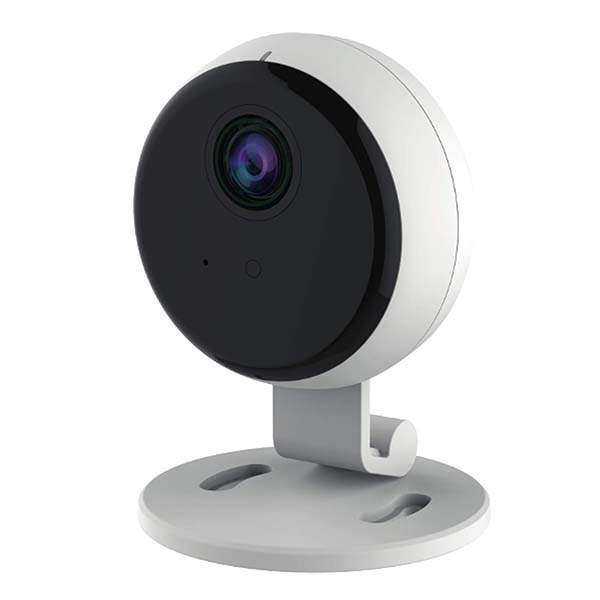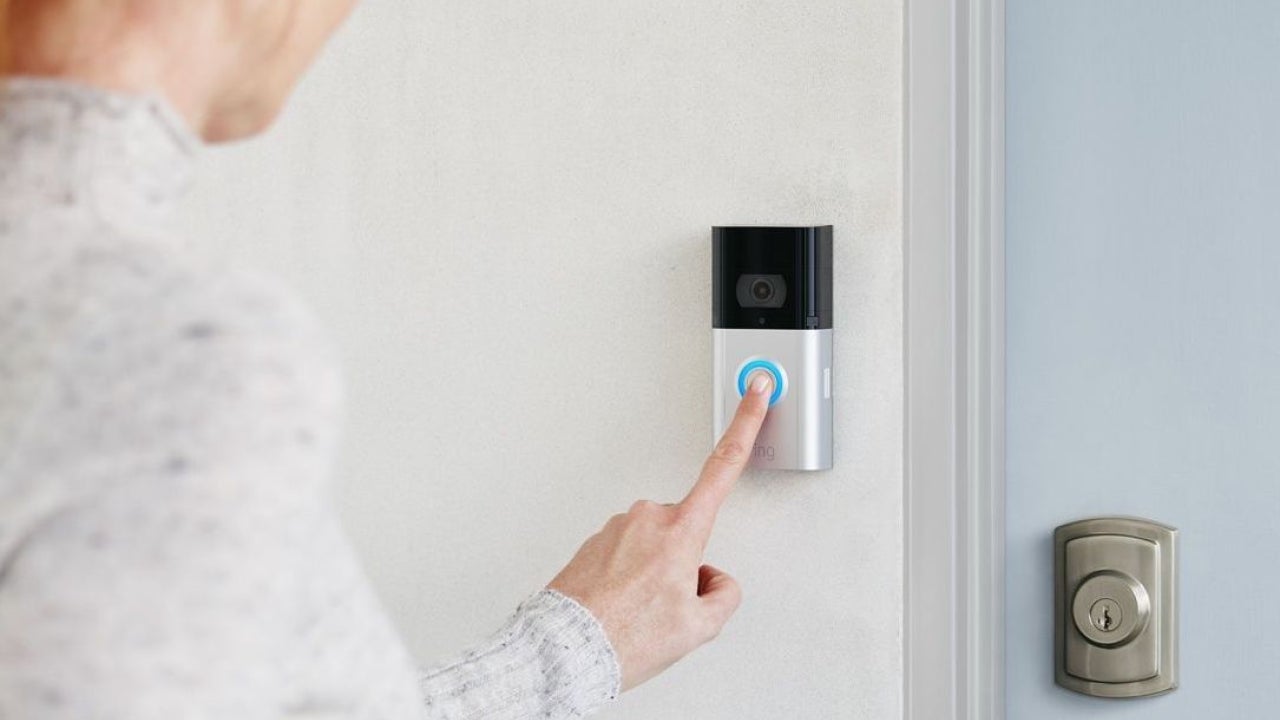
Unmonitored home safety systems are an alternative for those who do not wish to pay a fee each month. These systems have some of the features that monitored systems offer, and they can keep you and your family safe both at home and work.
Best for: Anyone who isn't certain if they are ready to commit or doesn't want to pay a monthly fee. These self-monitored home security systems can be easily set up, and they are portable.
They're often easier to install than other security systems because there's no need for wires behind walls or in basements, and most don't require a background in electrical work. It's also easier to upgrade them or remove them from your home when you move. Most companies will transfer the equipment for you without needing to hire an electrician.

These systems are simple to use and can also be tailored to suit specific situations. This includes rooms and areas where valuable and expensive items need to be closely monitored. Many systems feature alert zones with the ability to send you a notification via text or email whenever something occurs.
The best self monitoring systems are customizable, offering a wide range of sensors and cameras. They also offer door alarms. These systems can send an alert to your phone if there is a break-in. If you want to, you can call emergency services or ignore the notifications.
You can choose to get a system that integrates with other smart devices, such as your lights and thermostat, and create automated routines in the system to make your life even easier. These are great for people who do work from home because they don't need to worry about remembering to arm and dearm their system while away.
Response times are higher for security systems that monitor their own response.
When there is a problem with your system, a monitored system will automatically notify the appropriate authorities. This can prevent the need to call your local police station and help you avoid false alarms, nuisance call fees or even a false call.

In addition, monitored systems typically have more sensors and cameras than other types of home security systems. This is because they have to be able to see and detect any threat that may occur, which increases their ability to protect you.
It can also be integrated into other smart devices like your thermostat and lights, saving you from having the remember to change settings when you leave home for work. It is an excellent deal for those who travel frequently, as they can be programmed to adjust to their schedules.
FAQ
How much should I pay for alarm monitoring
Alarm monitoring prices can vary depending upon how often it is to be monitored, what type of equipment you need, as well as whether you are looking at an annual or one-time fee.
Do I really want a home alarm?
If you own a home, you definitely need a home security system. An intruder could enter your home at any moment without warning. They'll steal everything, even valuable electronics. You can leave your doors unlocked and they'll take everything.
Your home is protected by a home security system that alerts you to any potential dangers. This includes motion detection, sending alerts via your mobile device, recording activity and allowing you access to the footage.
If you'd rathernot spend money on a home security system, you can always use a simple DIY camera instead. These cameras let you see who is at your door and give you notification when they come or go. These devices will not help stop intruders entering your home.
What is the number 1 home security system?
Ring Video Doorbell Pro is our number one home alarm system. It allows you speak and see anyone anywhere, anytime using your smartphone. You can also record video and share it via text message and email with your friends and family.
What is the easiest method to install a home security alarm?
These systems are considered the most effective for home security and do not require any type of installation. They are called "plug & play" systems, and they work like magic. All you need to do is plug them into the power outlet, and then connect them to the internet using a wireless router. Once connected, you'll be able to control everything from anywhere in the world.
Statistics
- Depending on your insurance, 24/7 professional monitoring may qualify you for as much as 15% off your premium. (safewise.com)
- (In my experience, the discount on my home insurance covered about 25 percent of the subscription of an average plan, but your mileage may vary depending on your location and the size of your home.) (theverge.com)
- Cove sets you free without punishing penalties and fees, unlike other security solutions that charge 75% to 100% of your remaining contract. (safewise.com)
- Most home security companies will charge you around 75% of the remaining term of your contract if you cancel early—and some require 100%.Related questionsWhat type of contract length can I expect from security providers?Home security system cancellation (safewise.com)
External Links
How To
How to Install Outdoor Motion Lights
How to install outdoor motion lamps
The first step in the installation of outdoor motion light fixtures is choosing the right light fixture type. Next, you need to decide where your lighting fixtures should be placed. The actual wiring of your system is the next step. The final step is to mount the fixtures.
Outdoor motion lights can be used to light pathways, driveways and walkways. You can choose from many different styles, sizes, and color options. Floodlights include spotlights. Pendants, downlights. Track lights. Wall sconces. Chandeliers.
There are three types of motion lights: wired, wireless and battery-powered. Hardwired systems use wires that connect directly from the power source to the fixtures. Wireless systems use radio waves for transmitting signals from one fixture into another. To operate fixtures, battery-powered systems require batteries.
Hardwired systems are usually installed by electricians. If you plan to hire an electrician to do this work, make sure he or she knows how to wire outdoor motion lights. Otherwise, you should consider hiring someone who specializes in installing these kinds of systems.
It is often simpler to set up wireless systems than hardwired ones. There is no need to run wires through walls and ceilings. But before you buy a wireless system you should first decide what type of wireless technology will work best for your needs. There are two main types of wireless technologies: infrared (IR) and radio frequency (RF). IR systems require line-of-sight between the transmitter and receiver. RF systems are able to bounce off walls and furniture, so there is some obstruction.
If you choose to buy a wireless system, you'll need to know what kind of controller you will use. Most outdoor motion lights come with built-in controllers. However, if you would prefer to control the outdoor lights by yourself, you will need a wired remote or handheld remote. The wired remotes attach to the fixtures using cables. Handheld remotes look like flashlights and are operated by pressing buttons on their bodies.
Battery-powered systems are easy to install. You just need to plug them in to an electrical outlet. Most models include sensors that detect movement to prevent them from turning on if there is no motion. The lights automatically turn on when there is motion near the sensor.
Timers are also available for most outdoor motion lamps. These can be used to reduce energy consumption by switching lights on/off at night. These timers are usually between 10 and 24 hours.
If you are looking for the best outdoor motion light, it is tempting to spend more to get a better product. But unless you really need a specific feature, it's not worth spending extra money. An LED spotlight is enough. It will not cost much and provide ample illumination.
The Best Home Security System. Over the last few years, the home security industry has seen a tremendous growth. This growth is due to technological innovations and increased public awareness about crime prevention. There are many options available to homeowners when choosing a home security program.